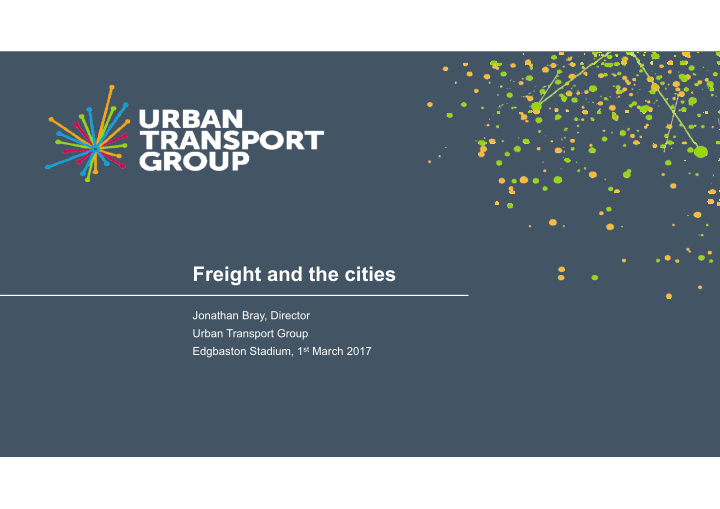



Freight and the cities Jonathan Bray, Director Urban Transport Group Edgbaston Stadium, 1 st March 2017
Freight and logistics becoming mainstream
Freight underpins the economy
Freight works
Smart, clean, human scale cities
Hamburg
Oslo
New York
Healthy Streets Ten indicators of a healthy street (Transport for London)
Freight doesn’t work for cities
Cities for people mean less space for vehicles
Our vision for urban freight • More freight to make its way to urban areas by rail or water… • either directly into urban areas or to the distribution centres serving them… • those distribution parks should be located so that the last mile can be completed using low or zero emission modes… • last mile journeys should be smart, safe, green and unobtrusive.
Future places, future streets • Looking at a major event later in the year (watch this space)
Standards • Working with major logistics groups and users to see if we can establish common understanding of our respective concerns • Standards (freight-specific schemes but also in relation to smart, air quality related measures, traffic restraint) • Our Urban Freight Working group is sharing approaches on freight strategies
Vans
Takeaways, questions and talking points • We want to play our part in further mainstreaming freight and logistics within wider urban transport policy? How do we better grab the attention of decision makers? • Place making is increasingly driving city centre transport policy making – the challenge now is how will freight and logistics (and other modes) fit in with the places and streets of the future? • Devolution and local democracy isn’t going away but we want to work with the sector on the issue of more common approaches across urban areas
Thank-you! Thank-you for listening
Recommend
More recommend